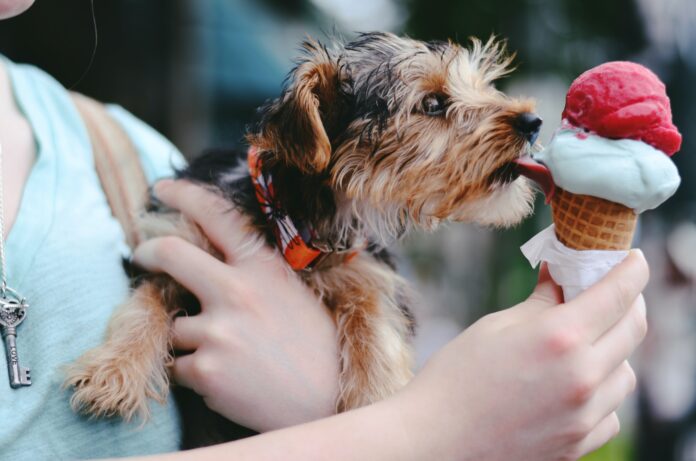When you first get your dog, figuring out how much food to give them and how often can be tricky. How much do dogs need? Do they need less as they get older? What if my dog is smaller or larger than average?
Thankfully, it’s not as complicated as it might seem. For adult dogs of the same breed, age and activity level, there is a standard quantity of food (and frequency) that will keep them all healthy.
As long as you feed your dog appropriate portions according to their body type, there isn’t one perfect answer for everyone. Read on for a complete guide to everything you need to know about feeding your dog correctly and consistently.
Know the Basics of How Much Food to Feed a Dog
Dog owners will often be asked how much food their dog consumes each day. Unfortunately, there isn’t a single, simple answer. While it’s true that dogs are carnivores and we feed them a high percentage of meat, the quantity of food that goes into the bowl will depend on multiple factors including the dog’s age, weight, and level of activity.
The other big factor to how much food you feed your dog is how it’s measured, or portioned. If you’re just dumping food into the bowl, you’re probably doing it wrong. Every dog is different, and some need more or less food, so paying attention to portion size is important.
How Much Food Does a Puppy Need?
Puppies have a high level of daily energy because they’re growing so quickly. Many people have the idea that puppies need more food than adult dogs, but that’s not always the case. A rule of thumb is to feed them like an adult dog that is 25% of their expected full-grown weight.
Puppies will often be fed a specially formulated kibble that is higher in nutrients than an adult dog food. Be careful not to overfeed them, though, as that can cause digestive issues and obesity.
How Much Food Does an Adult Dog Need?
One of the biggest misconceptions about dog food is that there’s one perfect serving for every dog. Thankfully, it’s not that simple. If you have a healthy adult dog (any breed, any sex, any age), you can feed them according to the standard feeding guide on the food’s bag.
That said, not every dog is the same. Again, puppies grow quickly, so they need more than adult dogs. Senior dogs need less food, and some breeds are larger than others so they will eat more.
How Much Food Should Senior Dogs Get?
As dogs age, their metabolism slows down. This means they need less food than when they were younger. You can feed senior dogs the same amount as adult dogs, but you can also feed them less to account for the reduced metabolism.
One common recommendation is to feed senior dogs two-thirds of the food you feed an adult dog. This will help them maintain a healthy weight as they age. Be careful not to overfeed them, however, as they can also become obese.
Other Factors That Determine How Much to Feed Your Dog
As we’ve seen, breed, age, and weight are the biggest factors that determine how much to feed your dog. However, there are some other things you can take into account to ensure your dog is getting the right amount of food.
You should also consider your dog’s activity level, their health, and even the environment they’re living in when deciding how much to feed them.
Activity Level – If your dog is especially active (if they hunt, do service work, etc.), they’ll need more food than a dog who is mostly sedentary. This is especially important to remember with puppies, as they are more active and need more nutrients than an adult dog.
Health – If your dog has a health issue like allergies or joint pain, you may need to feed them more to account for the extra calories they’re burning. Similarly, if they are underweight, you may need to feed them more to get them back to a healthy weight.
Environment – If your dog is kept outside in extreme heat or cold, you’ll need to feed them more than if they’re indoors. This is because they’re burning more energy to stay warm or cool.
Bottom Line
Regardless of your dog’s age, breed, or current weight, they should be eating according to the feeding chart on the back of their food bag. If they are gaining or losing weight, you may need to adjust the portion sizes or switch their food to one that has different caloric requirements.
Remember that every dog is different and will require different levels of food based on their breed, age, health, and current weight. Feeding your dog the right amount of food is an important part of their overall health and wellness.











